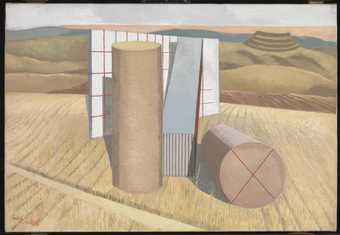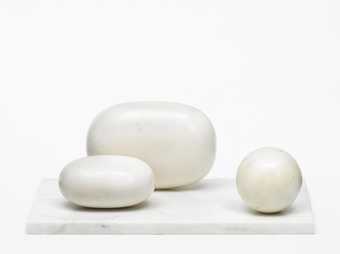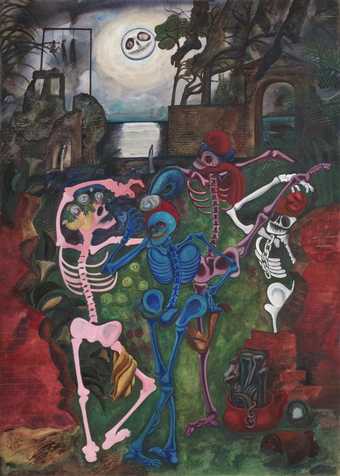
Paul Nash
Equivalents for the Megaliths (1935)
Tate

Dame Barbara Hepworth
Three Forms (1935)
Tate

Edward Burra
Dancing Skeletons (1934)
Tate
At this point the two major currents in modern art were seen as being abstract art on the one hand and surrealism on the other. Unit One embraced the full spectrum, Nash himself making both abstract and surrealist work in the mid 1930s and played a major part in organising the International Surrealist Exhibition in London in 1936 (British surrealism). The launch of the group was announced in a letter from Paul Nash to The Times newspaper, in which he wrote that Unit One was ‘to stand for the expression of a truly contemporary spirit, for that thing which is recognised as peculiarly of today in painting, sculpture and architecture’.
The first and only group exhibition was held in 1934 accompanied by a book Unit One, subtitled The Modern Movement in English Architecture, Painting and Sculpture. It consisted of statements by all the artists in the group, photographs of their work, and an introduction by the critic and poet Herbert Read, who was an important champion of modernism in Britain. The other artists involved were John Armstrong, John Bigge, Edward Burra, Barbara Hepworth, Henry Moore, Ben Nicholson, Edward Wadsworth and the architects Welles Coates and Colin Lucas.
Related glossary terms
St Ives school, Penwith Society of Arts, The seven and five society
